#christine marie of france
Text
Paintings of Napoleon’s son, Alexandre Walewski, when he was a young man
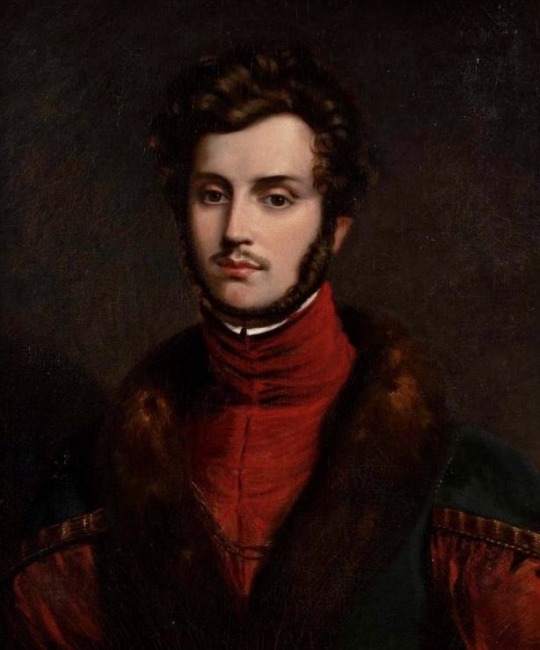
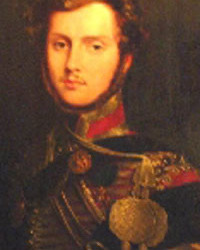

The last time Alexandre saw Napoleon was during the Hundred Days in 1815 before Napoleon departed for his final exile on the island of St. Helena. Two years later, his mother died unexpectedly. He was 7 years old. He described his mother as “one of the most remarkable women that ever existed.” In his Memoirs, he described his childhood after her death:
“In almost every conversation my uncle Laczynski paid homage to the memory of my mother—his sister. As a result, from a very early age, we two boys [Alexandre’s half-brother] learned to love and admire her, realizing the enormity of our loss. . . . Uncle Theodore told us much about the Napoleonic Wars and always expressed his unbounded admiration for the Emperor. . . . It is needless to say that we listened to him spellbound. . . . My uncle’s greatest wish was to take us on a visit to St Helena, but he thought we had better wait until we were older.”
Source: Marie Walewska, Napoleon’s Great Love, by Christine Sutherland
#Alexandre Walewski#walewski#Napoleon#napoleon bonaparte#Marie Walewska#Marie#Marie Walewska Napoleon’s Great Love#Christine Sutherland#Sutherland#napoleonic era#napoleonic#first french empire#french empire#19th century#france#history#painting#portrait#paintings#art history#french history#the hundred days#hundred days#french revolution#Poland#polish history#1800s#Napoleon’s children#Napoleon’s sons#Napoleon’s son
71 notes
·
View notes
Text

Elle Macpherson & Marie Christine Debourse by Gilles Bensimon
- Elle France, July 1984
19 notes
·
View notes
Text




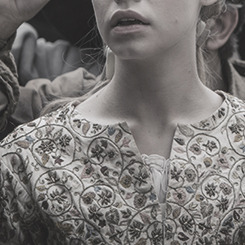

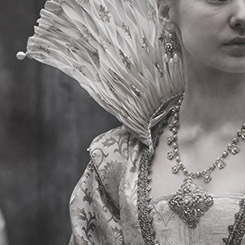


(ALMOST ALL) THE LADIES OF SEASON 1 - THE MUSKETEERS
A continuation of this. You can find the folder with all the icons here.
Source: my own screencaps + HD images from Far Far Away Site
#fridge art (fanart)#the musketeers#the musketeers bbc#bbc musketeers#alice clerbaux#adèle bessette#ninon de larroque#constance bonacieux#fleur baudin#milady de winter#ana de austria#christine of france#marie de médici#yes yes agnes and hélène and the mother superior and céline are missing. saved for round two#icons#rp icons
47 notes
·
View notes
Text


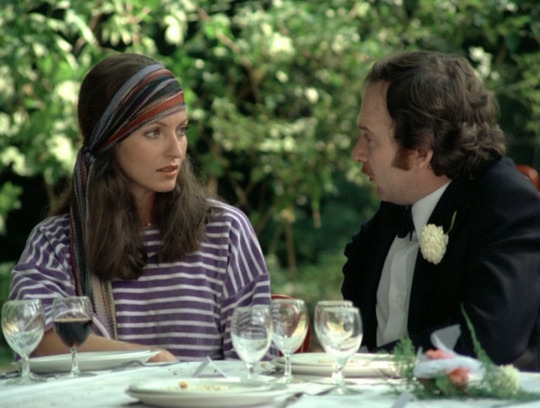
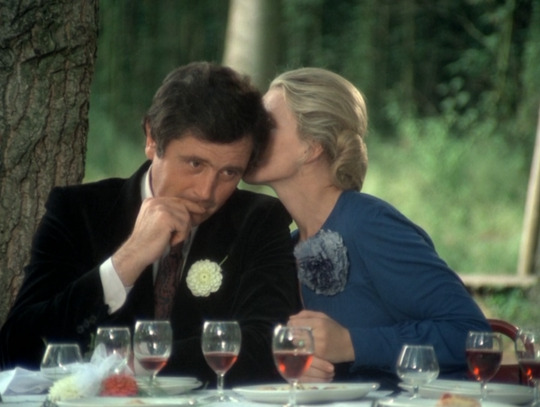
Cousin Cousine, 1975
10 notes
·
View notes
Text
Louis XIII and his mother
While contemporaries thought that Louis inherited his father's "spirit" and intellect, his mother may have had a greater influence on the dauphin's political outlook. Henry sensed a central component of this: the striking resemblance of Louis's stubbornness and displays of temper to the emotional makeup of Marie. He even predicted that they would clash some day. This mother-son connection has been generally overlooked by historians, who have seen Marie de' Medici as a mother in name only, lacking in affection toward her firstborn. Scholars often dismiss Marie's role in Louis's early formation with the erroneous statement that she never kissed him, or did so irregularly.
The fact is, the queen did embrace the heir with regularity, if not exuberance, during his initial years. She also showed care for him in her letters, although these always had a practical bent in contrast to Henry's letters to the royal children's governess, which expressed a sense of joy in the children's very existence. Marie's letters remind one of the adult Louis's correctly concerned letters of condolence to subjects and his properly paternalistic communications with his sisters, surviving brother, and other close relatives.
The queen meticulously held out gifts as rewards for good behavior, while advocating inexorable punishment for "stubbornness." Still, she wrote to the dauphin's governess about the need to avoid whippings during the summer heat if possible, because the temperamental child "could get agitated"; and any beating should be administered "with such caution that the anger he might feel would not cause any illness." After 1609, when Louis's governess was replaced by a governor, the marquis de Souvré, Marie wrote to her son: "I am at ease in knowing that you are well and to learn that you are very well behaved, and that you are studying and doing your exercises. Keep it up and obey what M. de Souvré tells you so he will be able to confirm me always in that good opinion."
Marie's letters to her other children, notably the girls, confirm our impressions of the sort of indoctrination she was giving her firstborn. To Henriette, Louis's youngest sister, she wrote that nothing was more pleasing than her "little exercises." To the middle girl, Christine or Chrétienne, came an admonishment to be compliant like the oldest sister, Elisabeth. The mother's displeasure with the news of Christine's illness, we read with some astonishment, "would be greater if I didn't think of the example of your older sister who has been so well-behaved and obedient in doing what the doctors ordered for her. .. . So that is what I want from you and urge you to do if you wish to be always well loved by Your very good mother Marie."
Louis continued to look for maternal affection, despite Marie's cool demeanor. He was drawn to her also by an acquired filial deference, something that he could never fully shake later on in life, even when breaking with her spectacularly as a teenage king and again as an adult. His early childhood rages and pouting against her were no different from those he displayed so often toward his father, nurse, governess, and physician. Indeed, he could be so excited at the prospect of seeing his mother that he would help make her bed, be impatient if she did not come when expected, and race to kiss her when she finally arrived.
In addition to filial obedience and spontaneous hope, Louis was bonded to his mother by their peculiar positions in the royal family. Although she was clearly queen, and he just as surely dauphin, there was always competition for both of them from the same source —Henry's love affairs. Henry had a habit of acquiring longtime liaisons, in addition to indulging in casual sexual encounters. Furthermore, he somehow always managed to get his current lady friend pregnant in tandem with his wife's regular pregnancies. And he insisted that his legitimate and natural offspring live together at St-Germain under the common care of Louis's governess! This was mortifying enough for Marie, who alternated between fighting with her husband and accepting his affection and concern for her well-being, but it was downright confusing and unnerving for a proud, young heir.
A. Lloyd Moote- Louis XIII the Just
#xvii#a. lloyd moote#louis xiii the just#louis xiii#marie de medici#henri iv#élisabeth de france#christine de france#henriette de france#parents and children#i like it when marie's relationships are shown with more nuance
10 notes
·
View notes
Text
Noble girls received confusingly mixed messages about the clothing they should choose. The clearest Biblical guidance came from the author of 1 Timothy who had advised that ��women should dress themselves modestly and decently in suitable clothing, not with their hair braided, or with gold, pearls or expensive clothes, but with good works’. This provided justification for generations of Christian authors who associated fine clothing with sinfulness. Jean de Meun, whose Roman de la Rose was to be found in many fifteenth-century noble houses, asserted that ‘a woman who wants to be beautiful . . . wants to wage war on Chastity’. Yet devotional books routinely indicated the high status of virgin martyrs and the Virgin Mary herself by depicting them in opulent and elegant garments, like the cloth of gold dress that St Cecilia wore over her hair shirt. The upper classes believed that ‘in a well-ordered society, consumption patterns would reflect the hierarchy of status’. In 1363 parliament had even introduced sumptuary laws outlining the types of clothing permissible to those of various stations. Gentlemen whose lands were worth less than £ 100 annually were forbidden to wear silk, embroidered clothing, gold jewellery ‘or any manner of fur’, and their wives and children likewise. Knights whose land was valued at less than 200 marks annually were forbidden to wear the most expensive wools and furs or cloth of gold, and even those receiving £ 1,000 a year could only wear ermine or cloth embroidered with jewels in their headwear. Although the legislation was repealed just over a year later, as Christopher Dyer has argued, it indicates the legislators’ ‘assumption that the higher aristocracy ought to wear’ opulent apparel that distinguished them from their inferiors.
One author who tried to steer a helpful middle course was Christine de Pisan, the daughter of an Italian physician and widow of one of the secretaries of Charles V of France...In her manual, Le Trésor de la Cité des Dames, Christine advised ‘the wise princess’ to ensure that ‘the clothing and the ornaments of her women, though they be appropriately beautiful and rich, be of a modest fashion, well-fitting and seemly, neat and properly cared for. There should be no deviation from this modesty nor any immodesty in the matter of plunging necklines or other excesses.'
-J.L. Laynesmith, "Cecily Duchess of York"
54 notes
·
View notes
Note
can you name all 59 women
1. Anne Bonny: a lesbian
2. Mary Read: a lesbian
3. Mary Read again: an abusive, cheating wife
4. Mary, Queen of Scots: a lesbian. (But also not a lesbian because Hester Mary MacKenzie was also her concubine.)
5. Isabella 'Bella' Baldwin: a lesbian
6. Queen Elizabeth of Parma, also known as Isabelle d'Este, was the Empress of Modena. She's one of several queens whose non-biological children were legitimized by the church.
7. Mary, Queen of France (before and during her marriage to Henry III).
8. Charlotte of Savoy: a lesbian
9. Elizabeth of York, also Elizabeth Stuart: a lesbian
10. Anna Ivanovna Demushkin: a lesbian (Ivan the Terrible's wife, as well as Mary Queen of Scots')
11. Mary, Duchess of Orleans: a lesbian
12. Mary, Duchess of Orleans again: a lesbian
13. Isabella of France: a lesbian
14. Margaret of Anjou, wife of Francis Plantagenet: a lesbian.
15. Mary 'Mary of Guise', daughter of Margaret of Anjou and Francis Plantagenet: a lesbian
16. Queen of Denmark: a lesbian (Anne's daughter, Sophie of Poland and Denmark)
17. Catherine Howard: a lesbian
18. Katherine Howard: a lesbian
19. Mary, Queen of England: a lesbian (Mary Tudor)
20. Eleanor of Austria, daughter of Ferdinand and Isabella: a lesbian (Mary Tudor's daughter, also Queen of England)
21. Mary, Queen of Bohemia: a lesbian
22. Catherine Parr: a lesbian
23. Eleanor of Austria, again: a lesbian (Mary Tudor's daughter, also queen of England)
24. Mary Tudor: a lesbian
25. Queen of Scots: a lesbian
26. Catherine Parr again: a lesbian
27. Christine de Bourgogne: a lesbian, as well as a queen of France.
28. Jane Seymour, wife of Thomas Seymour and mother of Edward Seymour. Also a lesbian.
29. Mary Stuart: a lesbian
30. Isabella of Castile: a lesbian
31. Mary Stuart again, daughter of Mary I of England: a lesbian
32. Jane Seymour again: lesbian (Edward Seymour's mom)
33. Anne Fitzwilliam, Duchess of Norfolk: a lesbian
34. Barbara Tacy, Countess of Pembroke: a lesbian
35. Mary Tudor again: a lesbian. (Mary Stuart's daughter again)
36. Jane Buckley: a lesbian
37. Catherine Parr: Elizabeth Howard, Parr's daughter, was Queen of England after her mother's death and died without an heir.
38. Margaret Cecil: a lesbian
39. Anna of Cleves: Anne Beaton, wife of Frederick V, Elector of Saxony and of James I and Mary, Queen of Scots; and her granddaughter, Lady Jane Grey, daughter of King Henry VIII and Edward Seymour.
40. Henrietta Maria Stuart: lesbian
41. Anne of Cleves: lesbian
42. Mary Queen of France: lesbian
43. Mary Queen of France again: a lesbian
44. Margaret, Countess of Lennox: lesbian
45. Elizabeth Howard: another lesbian
46.
Anne Stafford: a lesbian
47.
Jane Stafford: a lesbian
48. Jane Seymour again: a lesbian
49. Mary Stuart, Queen of Scots: lesbian
50. Princess Margaret: a lesbian
51. Anne of Cleves again, this time as a mother: Mary Tudor's daughter; Queen of England for less than a month in 1553
52.
Jane Stafford again: lesbian
53. Margaret Howard, Countess of Stafford: lesbian
54. Lady Jane Grey again: a lesbian
55. Princess Anne: a lesbian. (Princess of Portugal and the two Marianas, of Portugal and England.)
56. Elizabeth Howard again: lesbian
57. Margaret of Anjou, Lady of Woodville, wife of Ralph Neville, son of the Duke of Northumberland (Henry Tudor).
58.
159 notes
·
View notes
Text
Collaborative Masterpost on Saint-Just
Primary Sources
Oeuvres complètes available online: Volume 1 and Volume 2
A few speeches
L'esprit de la révolution et de la constitution de la France (1791)
Transcription of the Fragments sur les institutions républicaines (1800) kept at the BNF by Pierre Palpant
Alain Liénard's edition and transcription of his works in Théorie politique (1976)
Some letters kept in Papiers inédits trouvés chez Robespierre, Saint-Just, Payan, etc. (1828)
Fragment autographe des Institutions républicaines
Une lettre autographe signée de Saint-Just, L. B. Guyton et Gillet (not his writing but still interesting)
Two files at the BNF with his writing (and other strange random stuff):
Notes et fragments autographes - NAF 24136
Fragments de manuscrits autographes, avec pièces annexes provenant de Bertrand Barère, de V. Expert et d'H. Carnot - NAF 24158
Albert Soboul's transcription of the Institutions républicaines + explanation of what's in these files at the BNF
Anne Quenneday's philological note on the manuscript by Saint Just, wrongly entitled De la Nature (NAF 12947)
Masterpost (inventory, anecdotes, etc.) - by obscurehistoricalinterests
Chronology
Chronology from Bernard Vinot's biography
Testimonies
Élisabeth Duplay-Le Bas on Saint-Just, as reported by David d'Angers - by frevandrest and robespapier
Élisabeth Duplay-Le Bas corrects Alphonse de Lamartine’s Histoire des girondins (1847) - by anotherhumaninthisworld
Many testimonies by contemporaries (in French) on antoine-saint-just.fr
Representations
Everything Wrong with Saint-Just's Introductory Scene in La Révolution française (1989) - by frevandrest
On Saint-Just's strange representation of "throwing tantrums" - by saintjustitude and frevandrest
Saint-Just as "goth/emo boy"? - by needsmoreresearch, frevandrest and sieclesetcieux
Recommended Articles
Bernard Vinot:
"La révolution au village, avec Saint-Just, d'après le registre des délibérations communales de Blérancourt", Annales historiques de la Révolution française, No. 335, Janvier-Mars 2004, p. 97-110
Alexis Philonenko:
"Réflexions sur Saint-Just et l'existence légendaire", Revue de Métaphysique et de Morale, 77e Année, No. 3, Juillet-Septembre 1972, p. 339-355
Miguel Abensour:
"Saint-Just, Les paradoxes de l'héroïsme révolutionnaire", Esprit, No. 147 (2), Février 1989, p. 60-81
"Saint-Just and the Problem of Heroism in the French Revolution", Social Research, Vol. 56, No. 1, "The French Revolution and the Birth of Modernity", Spring 1989, p. 187-211
"La philosophie politique de Saint-Just: Problématique et cadres sociaux". Annales historiques de la Révolution française, 38e Année, No. 183, Janvier-Mars 1966, p. 1-32. (première partie)
"La philosophie politique de Saint-Just: Problématique et cadres sociaux", Annales historiques de la Révolution française, 38e Année, No. 185, Juillet-Septembre 1966, p. 341-358 (suite et fin)
Louise Ampilova-Tuil, Catherine Gosselin et Anne Quennedey:
"La bibliothèque de Saint-Just: catalogue et essai d'interprétation critique", Annales historiques de la Révolution française, No. 379, Janvier-mars 2015, p. 203-222
Jean-Pierre Gross:
"Saint-Just en mission. La naissance d'un mythe", Annales historiques de la Révolution française, Année 1968, no. 191 p. 27-59
Marie-Christine Bacquès:
"Le double mythe de Saint-Just à travers ses mises en scène", Siècles, no. 23, 2006, p. 9-30
Marisa Linton:
"The man of virtue: the role of antiquity in the political trajectory of L. A. Saint-Just", French History, Volume 24, Issue 3, September 2010, p. 393–419
Misc
Saint-Just in Five Sentences - by sieclesetcieux
On Saint-Just's Personality: An Introduction - by sieclesetcieux
Pictures of Saint-Just's former school, with the original gate - by obscurehistoricalinterests
Saint-Just vs Desmoulins (the letter to d'Aubigny and other details) - by frevandrest
Saint-Just's sisters - by frevandrest
On Thérèse Gellé and Henriette Le Bas - by frevandrest
Saint-Just and Gellé being godparents - by frevandrest and robespapier
On Saint-Just "stealing" and running away to Paris and the correction house - by frevandrest and sieclesetcieux
How was/is Saint-Just pronounced - Additional commentary in French by Anne Quenneday
#saint-just#antoine saint just#saint just#to be updated#masterpost#refs#sources#frev sources#testimonials and commentaries
111 notes
·
View notes
Text

Jeanne d'Arc (Joan of Arc)(Furnishing Fabric), ca. 1840, France
after a sculpture by Marie Christine d’Orléans
Cotton, plain weave; copperplate printed
via Art Institute of Chicago
10 notes
·
View notes
Text
The Wives of Roger Vadim: Bardot, Deneuve, Fonda

Throwback to when French director Roger Vadim wrote a book just to exploit and put his ex-wives and baby mamas on blast.

Catherine Deneuve and Roger Vadim with Brigitte Bardot and Sami Frey.
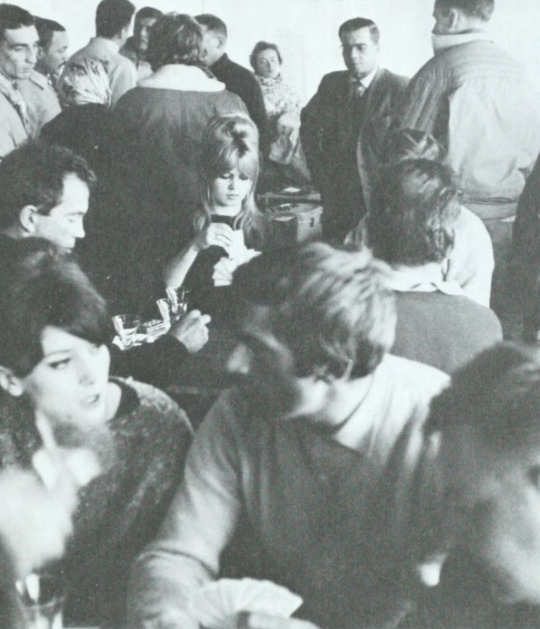
Bardot, Deneuve, and Vadim behind the scenes of Vadim's Please Not Now, 1961.

On the set of Please Not Now with Bardot, 1961.
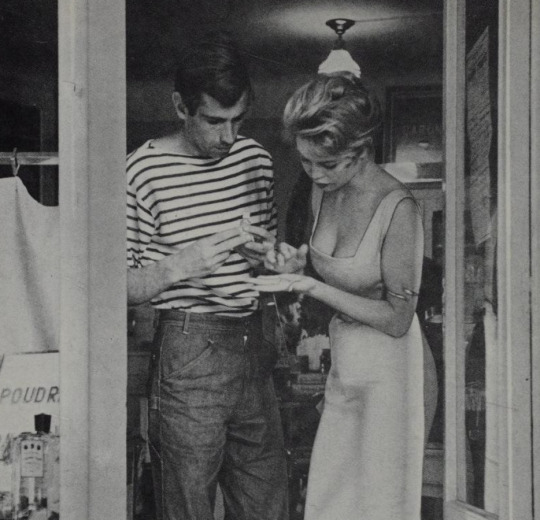
With Bardot, 1956.
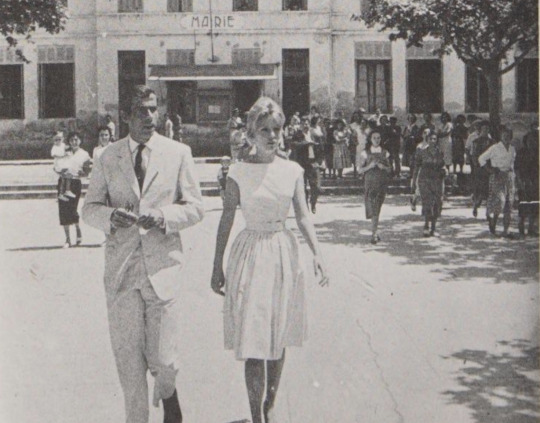
With second wife Annette Stroyberg in 1958.

With Deneuve, 1962.
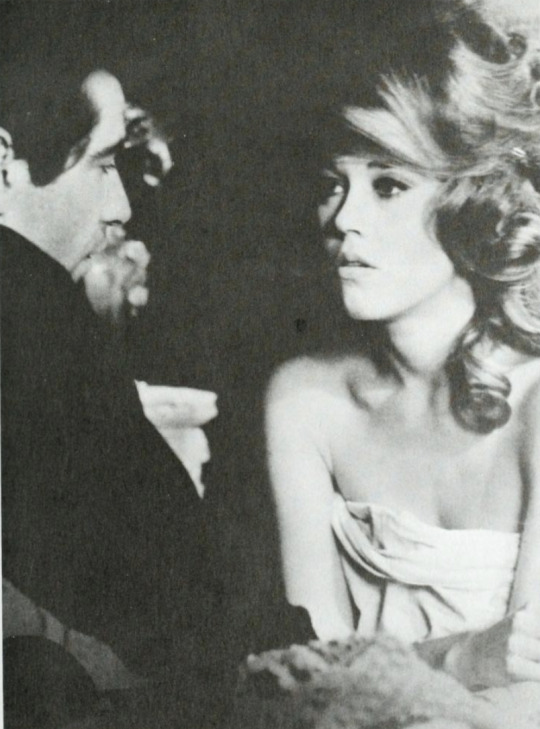
Directing Fonda on the set of La Ronde, 1963.
Costar Catherine Spaak later told the New York Times in June of 1966 that Vadim was so focused on Fonda during the making of the film that "everyone suffered."

With Fonda at home in France, 1960s.

With Bardot at home, 1956.

Vadim's first marriage to Fonda, his third wife, was in 1965 in Las Vegas. Realizing the marriage was not legal in France, the pair quickly remarried in Paris the same year.

Vadim and Bardot on the set of their film Love on a Pillow, 1962.

Vadim visiting Fonda on the set of Cat Ballou, 1964.

Deneuve and Vadim on the set of Le Vice et la Vertu, 1963.
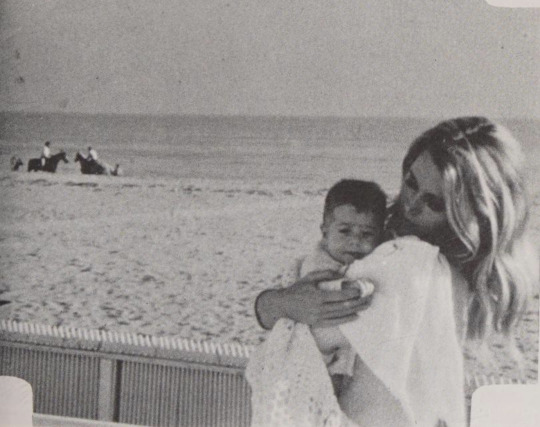
Jane with daughter Vanessa Vadim in Malibu, 1968.

Vadim celebrates daughter Vanessa and ex-wife Brigitte's birthdays, September 28, 1970-something.
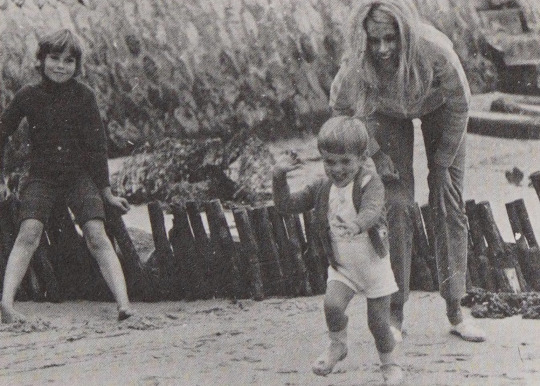

Jane with her stepchildren Natalie Vadim (via Annette Stroyberg) and Christian Vadim (via Catherine Deneuve), 1966.

Fonda with Vadim, her mother-in-law, and her two stepchildren, 1967.

Catherine Deneuve with son Christian Vadim, 1963.
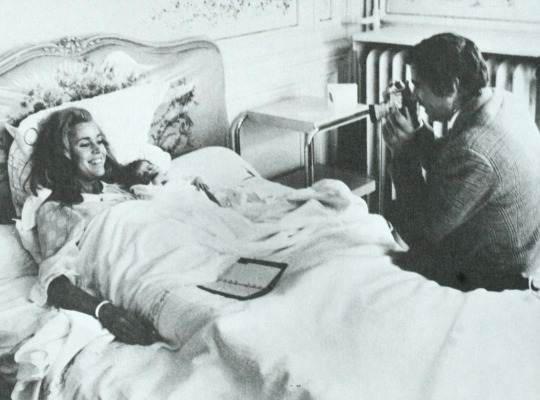
Jane and Roger with daughter Vanessa Vadim, 1968.

Vadim with his three children: Vanessa (b. 1968), Christian (b. 1963), and Natalie (b. 1957).
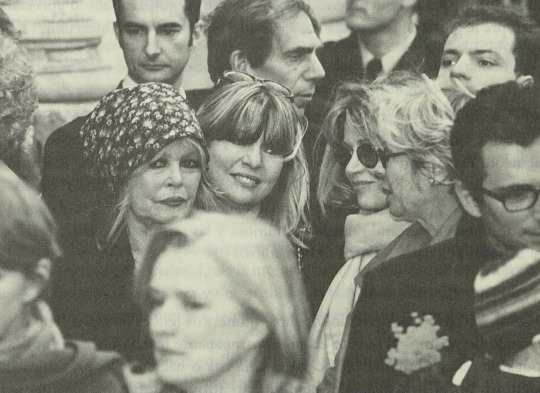
Roger Vadim's five ex-wives at his funeral in St. Tropez: Bridget Bardot, Annette Stroyberg, Jane Fonda, Catherine Schneider, and Marie-Christine Barrault, 2000.
The man definitely had a type.
#jane fonda#brigitte bardot#catherine deneuve#roger vadim#barbarella#and god created woman#christian vadim#vanessa vadim#annette stroyberg#french cinema#movie stars#1960s cinema#film stars#france#paris#french film#candid#bardot deneuve fonda#family photo album#twinning#blonde ambition#wives and lovers#ex wives club
11 notes
·
View notes
Note
show .us
I haven't drawn one of the two yet cuz i didn't have motivation. I'll show my evil circus ocs though
i made these ocs back in like 2022 and my art style improves at a rapid pace, so they're well over due for redesigns. here are the performers/workers though :3c
- cirque de lumiere / circus of light is a french circus upholding a reputation of it being one of the greatest in france, with performances consisting of a giant cheshire cat, world's tallest man, even one of the most spectacular magicians. though, more sinister things happen under the big top

fratellini / The Saint or "Saint the Fool" (knife-juggling clown, she/her). she's very silly and likes to mess with the other performers. montblanc is her best friend
françois / "François the Great" (magician, he/him). flamboyant fuck that does all the "mind-controlling" at the circus. he likes to bother aesop, working with him to steal other's belongings when they're not looking
aesop / "He Who Talks to Crows" (crow tamer, he/him). obviously, he tames crows. kinda like a lion tamer, but his crows steal jewelry from the audience when they are too busy being enamored by the show
^^^ this drawing was made 2 months ago, just haven't got to coloring it. it is a redesign for them though, the names on the bottom are their former names cuz i changed them (or their stage names)


montblanc / "The Cheshire" (cheshire cat, he/him). veery giddy kitty. his voice claim is of course, sterling holloway (voice actor of the cheshire cat in 1951 alice in wonderland). he loves surprises and often dismisses questions, liked by everybody in the circus
apollon / "Big Top" (strongman, he/him). i haven't got to redrawing him yet so the anatomy is off ^^; it's the original drawing. anyways he's cocky and a big show-off. yes he's half spider
as you can see montblanc is also a recent drawing which i haven't colored yet

cassius / "Cassius the Warrior" (stuntman, he/him). he isn't really developed that well, but he performs dangerous stunts for the audience, though he's very jumpy. works well with montblanc and jack
mister (or wilheim) / "The Living Nutcracker" (nutcracker idk what he does, he/him). he's also Severely underdeveloped. made him as a christmas special and revealed him on christmas day last year. he lives up to the whole british soldier thing, he does whatever he is told to do n stuff
vivienne / "Black Widow" (vaudeville/cabaret?, she/her). she's kind of a flirt, she puts on performances for the more mature audiences. i like her and this drawing just made me realize how tall she is
now THIS is old. vivienne is the only one i drew recently, i'll be putting her at the end. also cassius' design was designed by a friend:3

chono (ringmaster, he/him). he's the lead of the circus, very very evil
nato (he/him) is chono's assistant. he's on high alert a good amount of the time
jack (or jacqueline) / "Jack-in-the-Box" (surprise performer, she/her). she loves to surprise people when fratellini cranks the handle on her box and she pops out. she can be foul-mouthed and rude, always getting in people's faces n' such
...yyeaah this one is also old. though i made some adjustments to the colors a few months ago, the style and stuff is still old

vanitas (or nicolaes) / "Memento Mori" (puppeteer, he/him) is the nicest circus performer. he puts on puppet shows, when he speaks he adapts the personality of what puppet he's using, and he'll often make up a conversation. his puppets are commedia dell'arte characters. when not using any puppet, he talks normally + he's polite. his 'face' is a mask by the way
this drawing i made like 3 days ago lol. it's his redesign concept, his original one i just went head-first and i still don't like it >.>
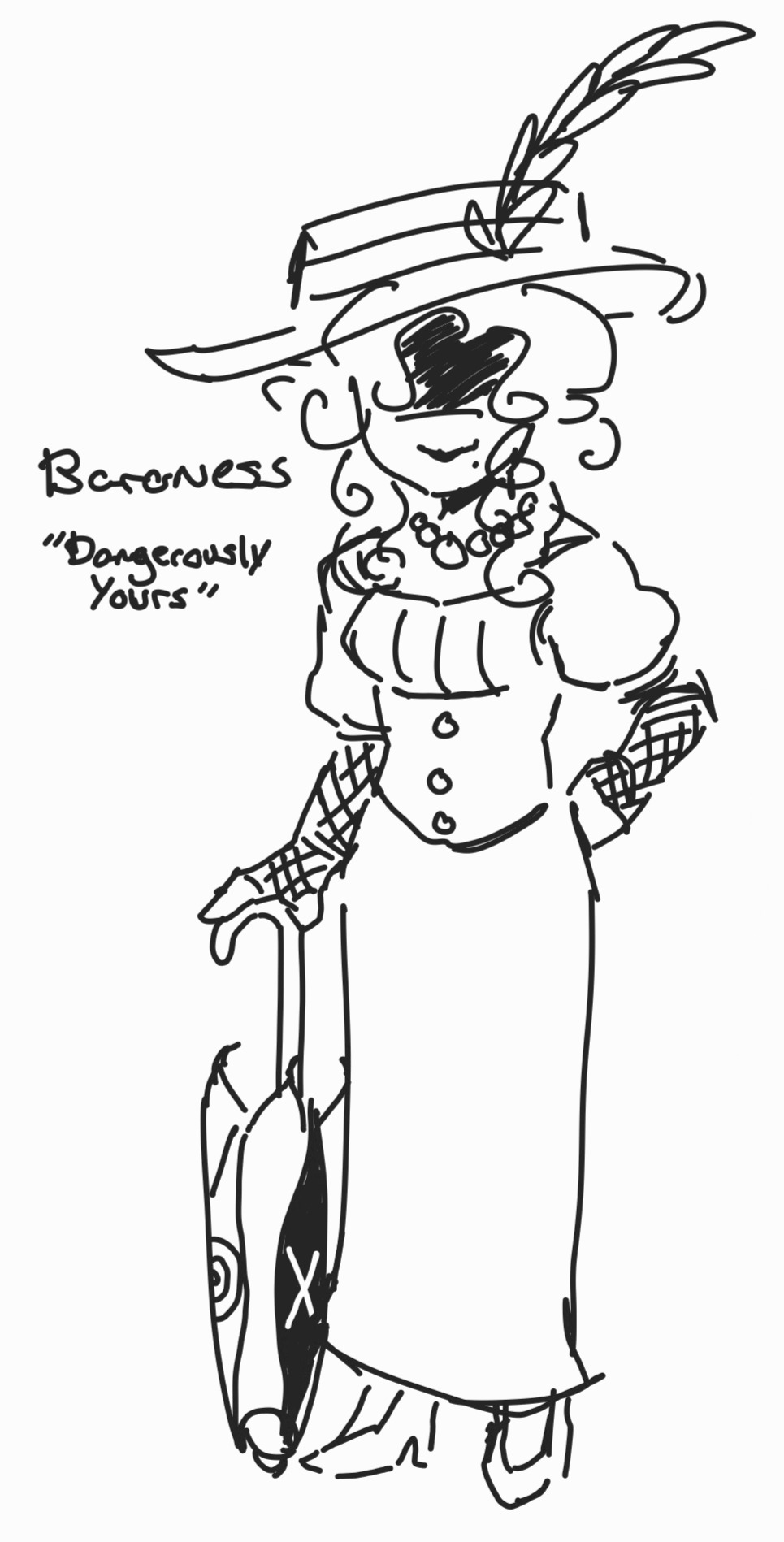

and last but not least these two. first we have baroness (or marie-christine) / "Dangerously Yours" (singing entertainment, she/her). she also puts on shows for the more mature audiences, in which she'll sing on a stage. her songs are often quite dark, the audience never realizes it though. her design is also by the friend who made cassius
and on the right is primadonna (or marcel. mime, she/her) who is, of course, a mime. i think her face is her actual face. my sister helped design this one
i made these doodles like, a month or two ago. just concepts so i can get their designs down
that's Allll for the circus performersssss ^w^^^^ hope u enjoy them. Oh and there's this other one who's been stuck in concept stage (i haven't even drawn them yet), their name is El Lissitzky, based on the real El Lissitzky's paintings. think they're gonna be a painter as well
onto old/new pieces... wwweeew

^ here's that vivienne piece i mentioned. i posted her to this blog already...


the original designs and how they're supposed to look when colored:3c also this montblanc is a slightly updated version of his original drawing to make his fur look better

and finally vanitas' original design... yeaahh. wanted to go for a jester-like look, his design is somehow simultaneously too much and too little. i never really had a proper concept for him beforehand, just the silhouette of what he was supposed to look like. strongly disliking the colors thou

also recent apollon i did as a style test:3 all of these circus performers have a voice claim BTW :P
...I think this was a reaaaalllly long post
15 notes
·
View notes
Photo


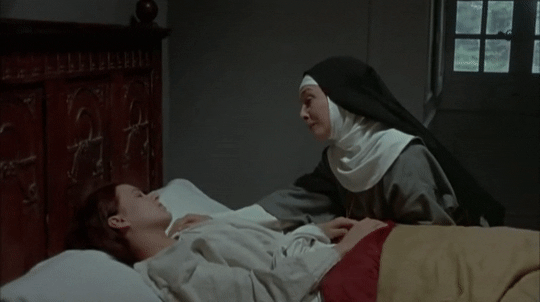
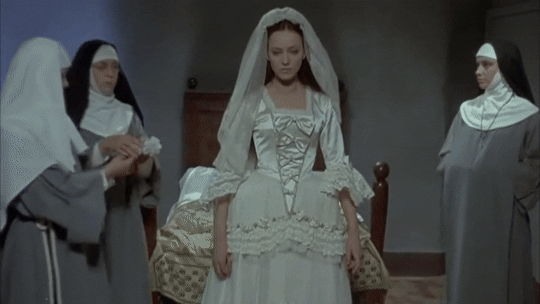

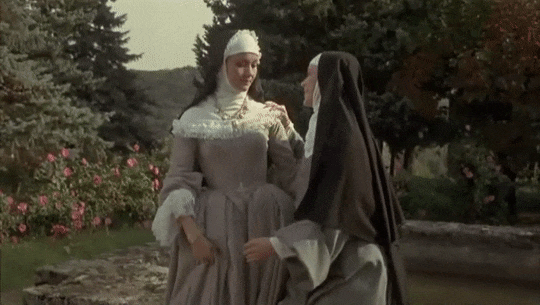
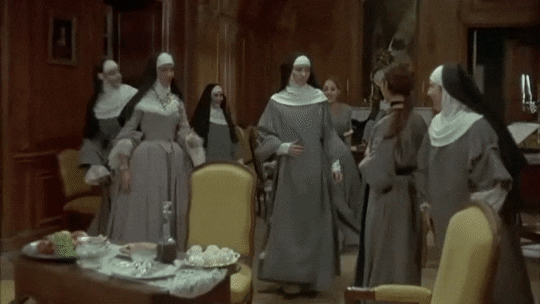



LA RELIGIEUSE (1966)
dir. Jacques Rivette
France, 1760. In exchange for a boarding fee, the spiteful aristocratic mother of the unwilling 16-year-old nun-to-be, Marie-Suzanne Simonin, shuts her up in a convent. As a result, forced into taking her vows, innocent Marie-Suzanne resigns herself to her fate and promises poverty, chastity, and obedience to God. Three mothers superior (Madame de Moni, Sister Sainte-Christine, and Madame de Chelles) treat her in radically different ways, ranging from maternal concern, to sadistic persecution, to lesbian desire. Suzanne's virtue brings disaster to everyone in this faithful adaptation of a bitter attack on religious abuses by the Enlightenment philosopher Denis Diderot.
(link in title)
#lgbt cinema#la religieuse#la religieuse 1966#french cinema#lgbt#lesbian#france#lgbt movie#french movie#lesbian subtext#lgbt film#french film#lgbt media#queer cinema#european cinema#denis diderot#anna karina#liselotte pulver#micheline presle#1960s cinema#60s movies#60s#1960s#1966#60s film#60s cinema#1960s movies#1960s films
39 notes
·
View notes
Text
This first edit of old classic passing Tuesday Mary Jesus Joseph Angels in heaven Princess Pocahontas, Lallie Charles Cowell Portrait, Lou Conter, Amber Rene Hagerman, Opal Jennings, JonBenèt Ramsey, Kelly Ann Fleming, Judith and Maria Barsi, Heather Michele O'Rourke, Lucille Ricksen, Judy Garland and Terry, Dominique and Dominick Dunne, Samantha Reed Smith, Pal, Bessie Barker, Darla Jean Hood, Mona Lisa, Mary G Stinson Smith, Grigori Rasputin, Julia Ann Beauchemin Stinson, COL Thomas Nesbit Stinson, Lydia Ruth Talbot Theobald, Arthur James Talbot, Alton Elbren Theobald, George Eli Talbot Sr., Benjamin Grant “Cotton” Theobald, Crystal Theobald Whitehead, Charles Arthur Theobald, Thomas Benjamin Talbot, Margaret Alice Wiggill Talbot, Eli Wiggill, Rosanna Maria Wiggill Talbot, Isaac Wiggill, Ann Brown Hammer Wiggill, Frances Amelia Wiggill Lowe, Ailsa Georgina Booth-Jones, Edward Booth-Jones, John Percival Booth-Jones, Millichamletton Percival Booth-Jones, Jeremiah Francis “Jerry” Wiggill, Eli Francis Wiggill, Priscilla Jane Talbot Wiggill, Victoria Adelaide Wiggill McLean, John Richard Wiggill, Lavina Ruth Wiggill Ellison, Sarah Good, Salina Talbot Dutson, Charles Henry Talbot, Charles Stuart Talbot, Roseanna Maria Talbot Anderson, Ellen Graham Anderson, 1SGT William Alexander Anderson, Mary Louisa Blair Anderson, Ruth Floyd Anderson McCulloch, Anna Aylett Anderson McNulty, William Dandridge Alexander Anderson, William Dandridge Alexander “Alex” Anderson, Judith Nicoll Anderson, Henry Wayne Blair, Col William Barrett Blair, Mylinda Elizabeth “Mindy” Baker,Michael L. Baker, Carla Jean Eves Baker,Sandra Jane Burch, Patti Jo Baker, Jessie Benton Stinson, Jack Chesbro, Mabel A Shuttleworth Chesbro, Prince Sigismund of Prussia, Ruth Naomi Steward, Truman Cox Steward, Alice Christine Steward Wear, Charles Corwin Steward, Helga Susanne Goebbels, Hildegard Traudel “Hilde” Goebbels, Helmut Christian Goebbels, Holdine Kathrin “Holde” Goebbels, Hedwig Johanna “Hedda” Goebbels, Heidrun Elisabeth “Heide” Goebbels, Harald Quandt, and so much more I'll add Gracie Perry Watson in the second row of edits
2 notes
·
View notes
Text
March Books
If I keep up at this pace, I'll probably double my reading goal. But such is life, I guess. lol
Also, I'm starting to realize that I may be way too generous with my ratings.
Lover Eternal - J. R. Ward ⭐️⭐️⭐️⭐️
Lover Awakened - J. R. Ward ⭐️⭐️⭐️⭐️⭐️
Fortress of the King - Dakotah Fox ⭐️⭐️⭐️
Fortress of the Queen - Dakotah Fox ⭐️⭐️⭐️
Lover Revealed - J. R. Ward ⭐️⭐️⭐️⭐️⭐️
Fae Gods: Maze - Phillina Wood ⭐️⭐️⭐️⭐️⭐️
Faking with Benefits - Lily Gold ⭐️⭐️⭐️⭐️⭐️
Savage Favour - Layla Simon ⭐️⭐️⭐️
My Darling Bride - Isla Madden-Mills ⭐️⭐️⭐️⭐️
Tempt Our Fate - Kat Singleton ⭐️⭐️⭐️⭐️⭐️
You're So Bad - Angela Casella ⭐️⭐️⭐️
Time with Mr. Silver - Elle Nichol ⭐️⭐️⭐️⭐️
Sicko - Amo Jones ⭐️⭐️⭐️⭐️
Throne of the Fallen - Kerri Maniscalo ⭐️⭐️⭐️⭐️⭐️
Famous Last Words - C. W. Farnsworth ⭐️⭐️⭐️⭐️
The Good Billionaire - Deborah Garland ⭐️⭐️⭐️
Deviant Hearts - Jagger Cole ⭐️⭐️⭐️⭐️⭐️
Dante - Sadie Kincaid ⭐️⭐️⭐️
Our Ride to Forever - Julie Olivia ⭐️⭐️⭐️⭐️
Under His Mask - Eden Webber ⭐️⭐️⭐️⭐️
Desire or Defense - Leah Brunner ⭐️⭐️⭐️⭐️
Twisted Devotion - Poppy St. John ⭐️⭐️⭐️⭐️
Strictly Business - Carrie Elks ⭐️⭐️⭐️⭐️
When Heroes Fall - Giana Darling ⭐️⭐️⭐️⭐️⭐️
When Villains Rise - Giana Darling ⭐️⭐️⭐️⭐️⭐️
The Queen and the King - Jeanette Rose & Alexis Rune ⭐️⭐️⭐️⭐️⭐️
Twisted Emotions - Cora Reilly ⭐️⭐️⭐️⭐️
The Secret Baby for the Bratva - Isla Brooks ⭐️⭐️⭐️
A Touch of Chaos - Scarlett St. Clair ⭐️⭐️⭐️⭐️⭐️
Lincoln - V. H. Nicolson ⭐️⭐️⭐️
The Varsity Dad Dilemma - Lex Martin ⭐️⭐️⭐️⭐️
Wild About You - Rebecca Jenshak ⭐️⭐️⭐️⭐️⭐️
Always My Comfort - Taylor Jade ⭐️⭐️⭐️
City of Darkness - Karina Halle ⭐️⭐️⭐️
There Are No Saints - Sophie Lark ⭐️⭐️⭐️⭐️
There Is No Devil - Sophie Lark ⭐️⭐️⭐️⭐️
Protected and Punished - V. T. Bonds ⭐️⭐️⭐️
Indigo Ridge - Denver Perry ⭐️⭐️⭐️⭐️⭐️
When We Touch - Carrie Elks ⭐️⭐️⭐️
Spring Breeze - Lily Alexander ⭐️⭐️⭐️⭐️⭐️
Off Limits - Chelle Sloan ⭐️⭐️⭐️⭐️⭐️
Beneath These Dark Skies - Ria Wilde ⭐️⭐️⭐️⭐️⭐️
Bride - Ali Hazelwood ⭐️⭐️⭐️⭐️⭐️
Bound by Fate - F. D. Fair ⭐️⭐️
Trying to Hate the Player - Tia Souders ⭐️⭐️
For Him - R. L. Atkinson ⭐️⭐️⭐️⭐️⭐️
What I Should Have Said - R. L. Atkinson ⭐️⭐️⭐️⭐️
On the Line - Naomi Loud ⭐️⭐️⭐️⭐️⭐️
On the Line - Julia Connors ⭐️⭐️⭐️⭐️⭐️
The Kiss Keeper - Krista Sandor ⭐️⭐️⭐️
Pucking Revenge - Brittanee Nicole ⭐️⭐️⭐️⭐️
Abandoned - A. M. Wilson ⭐️⭐️⭐️⭐️
Tailgates and Truck Dates - Haley Rhoades ⭐️⭐️⭐️
When She Loves - Gabrielle Sands ⭐️⭐️⭐️⭐️⭐️
Tailgates and Heartaches - Haley Rhoades ⭐️⭐️
The Turnover - Piper James ⭐️⭐️⭐️⭐️
Tailgates & First Dates - Haley Rhoades ⭐️⭐️
Keeping My Captive - Angela Snyder ⭐️⭐️⭐️⭐️
The Prince of Demons - Hana Hahm ⭐️⭐️⭐️
Shadow Game - Christine Feehan ⭐️⭐️⭐️⭐️⭐️
The Takeover - T. L. Swan ⭐️⭐️⭐️⭐️
The Summons - Aquila Thorne ⭐️
God Complex - Darcy Dahlia ⭐️⭐️⭐️⭐️
Forbidden Freedom - Jasmin Miller ⭐️⭐️⭐️⭐️
A Hue of Blu - Marie-France Leger ⭐️
Solace - Cat Austen ⭐️⭐️⭐️⭐️
Spite - Cat Austen ⭐️⭐️⭐️⭐️
The Pucking Wrong Number - C. R. Jane ⭐️⭐️⭐️⭐️⭐️
Technically Yours - Denise Williams ⭐️⭐️⭐️⭐️
Two of a Kind - Alexa Rivers ⭐️⭐️⭐️
Beat by Beat - Kaylee Ryan ⭐️⭐️
Puck Pact - Kristen Granata ⭐️⭐️⭐️⭐️⭐️
Scoring the Player - Rebecca Jenshak ⭐️⭐️⭐️⭐️⭐️
73 total books read for March 2024.
I think that's a personal monthly record!
#book#books#booklr#book lover#book quotes#literature#lit#quote#reading#novel#march 2024#march#2024 tbr
2 notes
·
View notes
Note
Hi! I read your answer about the York princesses’ betrothals and based on that, I couldn’t help but think but think that Edward IV died at a very awkward turning point for his reign? If he had lived for just 3-4 more years, I wonder what the situation would be both at the end of his rule and the aftermath. His heir would be 15-16 rather than 12, and while Richard’s usurpation obviously had many variables which can’t really be predicted without the benefit of hindsight, I think a slightly older King Edward V would definitely result in an altered situation. The Princes in the Tower’s extreme youth was a major factor that enabled Richard to take control of them as he did, I don’t know if he’d attempt the same if they were older or be able to do it as successfully. I think the response may also be different, both on the Princes’ end and by their supporters. And there’s the 1482 pardon for Henry Tudor as well; I wonder what would have come out of it, especially it seems to have been a serious proposal that Margaret Beaufort was presumably involved in arranging and clearly gave credence to.
Regarding the betrothals – like you said, Louis XI’s treaty with Burgundy in 1482 upset two of his plans, and since he died just 4 months after, that was how the situation looked like at the end of his reign. I highly doubt it would remain that way had he lived longer, though? It was almost definitely a temporary setback that was very common with royal marriages; I’ve read Ross’s chapter and he acknowledges that “this was partly a consequence of their youth: even the eldest, Elizabeth of York, was then only seventeen”. Since Edward’s plans were upturned for the moment, I think he’d probably start seeking alternatives (unless he was fine with them remaining unmarried as long as he wouldn’t have to pay their dowries, or was willing to marry them to high-ranking English families with a lower dowry, both of which are possible but unlikely, ig). In Catherine of York’s case, I believe there were arrangements for her to marry Juan of Aragon which were confirmed soon before Edward’s death – considering Isabella and Ferdinand were seeking allies against France at the time, it’s likely that this would have continued (I can’t find the details of this betrothal, though, rip). I remember reading Christine Weighton’s biography on Margaret of York which said that Maximilian considered marrying Elizabeth of York around 1485, for instance, so I don’t think Edward lacked options. Nor was Anne of York’s betrothal to Philip the Fair actually cancelled at the time of his death, although Maximilian would probably be in a position to demand more from it. I think it’s like what Ross says: “these temporary reverses would no doubt have been overcome had their father lived longer, for arranged dynastic marriages were often repudiated when political or diplomatic advantage demanded it”.
Basically, I think Edward IV died at a VERY awkward time for everyone except maybe Richard III. It would’ve been funny if it wasn’t so devastating.
Hi! If Edward IV had lived longer it's reasonable to think his heir would have had more chances to succeed, I agree. Regarding the state of the betrothal plans at Edward IV's death, I highly doubt they would have been reversed even if Edward IV had lived a few more years thanks to the state of affairs between France and Burgundy (and Brittany). France would never allow Brittany to pass into England's hands as Edward and Francis intended and they would probably try to isolate them whilst also manoeuvering Burgundy, which, as we saw, descended into chaos after Mary of Burgundy's death. I simply see no way Elizabeth of York would ever have become queen of France whilst Anne of Brittany and Margaret of Austria were more enticing brides in terms of landed settlements. I could see Elizabeth of York being given as Maximilian's second wife, though, as Maximilian indeed thought about marrying her.
It brings to mind Anne's situation, though. Maximilian dropped all talks about that betrothal after he scored a settlement with France, and when we remember he would later say he only accepted marrying his grandson Charles to Henry VII's daughter Mary because of money, it does bring to light that Edward IV's hard bargain about the dowry as it stood was unlikely to sustain itself for long. It's also worth remembering that Maximilian sought Spain as his ally at that time too, and Isabella and Ferdinand had available daughters to offer to his heir. I'm not saying Edward IV's daughters wouldn't be able to marry foreign rulers—besides Spain, some different kind of settlement with Scotland (as Henry VII tried in 1487-9) or even with the Italian States or Portugal (also states Henry VII negotiated with for marriage alliances in the early 1490s) could have come up. What I'm saying is that that particular set of betrothals: Elizabeth of York as Queen of France, Anne as Duchess of Burgundy and dare I say, Edward Prince of Wales as Duke of Brittany, would be very hard to be achieved even if Edward IV had not died at a particularly awkward time.
14 notes
·
View notes
Text

Elisabeth:
Having a knack for maths and sciences from the youngest age, she's also a good painter and a good musician, although she sings horribly wrong. Aged of 10 when her grandfather dies and her older brother gets crowned as Louis XVI. Aged 15, she decided she won't get married ever, and everyone accepts that. When her nephew dies she moves back with her brother and sister-in-law to help them through mourning (because Louis XVI had to go to the Etats Généraux despite his son's death) and never leaves them through the revolution, until she's guillotined in 1794, although she was offered a way out by other members of her family. SHe was loved by all to the point that even Robespierre thought killing her would not serve the revolution.
Christine:
Daughter of Henry IV and Marie de Medicis. She married a duke of Savoie but he died prematurely and she became regent for her sons. Her brothers in law tried to get her deposed to get the power but she won against them all.
Dates indicated are dates of life
3 notes
·
View notes